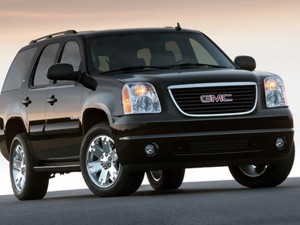
GM’s chairman Dan Akerson also met Monday with more than 700 employees at GM’s campus in Shanghai’s eastern suburbs, the company said in a release on its website.
The choice of China for the board meeting reflects the country’s crucial status as the world’s biggest market for sales of new vehicles, despite a recent decline from double-digit growth.
Akerson’s arrival at the board meeting in an EN-V electric concept car highlights the company’s aspirations to expand sales of so-called “new energy” vehicles in China.
GM is due to launch sales of its Chevrolet Volt in China later this year. But market prospects for the car are clouded by concerns that China may require the company to share key proprietary technology with its flagship partner SAIC in order for the Volt to qualify for new energy vehicle subsidies.
The issue has raised complaints from US lawmakers who contend such requirements are unfair and may violate world trade rules.
The meeting came as GM and state-owned SAIC, or Shanghai Automotive Industrial Corp., were preparing Tuesday to sign a new technical cooperation agreement. Details were not yet available.
Shanghai is the site of GM’s international headquarters and its highly successful venture with state-owned SAIC, which on Monday rolled out the 5 millionth vehicle since production began in late 1998.
An explosion in Chinese demand and sluggish sales in the recession-stricken West helped China overtake the US as the largest car market in 2009. Last year, sales of passenger vehicles, excluding large buses, jumped by a third to 13.7 million vehicles.
Although growth in the overall market has slowed in recent months, GM’s sales in China still jumped 13.4 percent in August from a year earlier to a record 205,885 vehicles for the month.
A large share of the company’s growth has come from sales of its minivehicles in another venture, SAIC-GM-Wuling. But strong demand for foreign-brand sedans and sport-utility vehicles has also helped.
The push for more advanced technology reflects China’s frustrations with its continued weakness in automotive technology, analysts say. After 25 years of auto joint ventures that require local partners to hold at least a 50-percent stake, domestic automakers still lag behind their global rivals as they struggle to master the complexities of 21st century automotive engineering.
“China is not a technology leader in virtually any industry. The country has developed around low cost production,” said Bill Russo, president of the consultancy Synergistics Ltd.
“This is the irony, that the largest and biggest growth market has relatively weak domestic manufacturers,” he said.